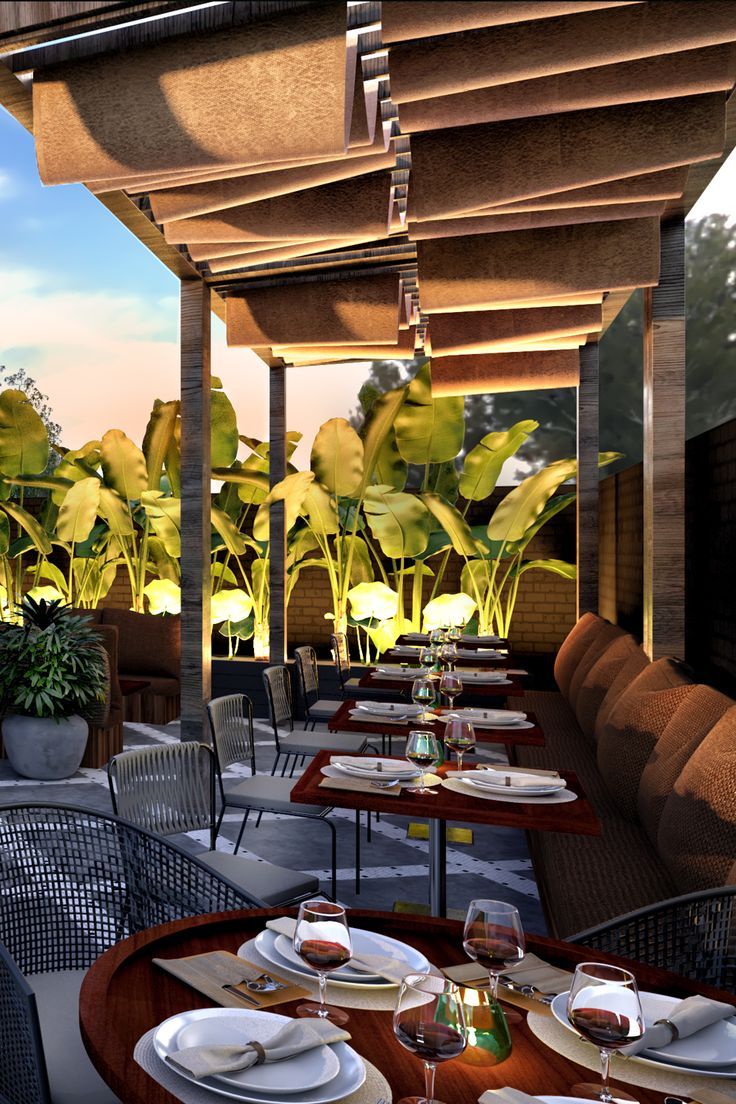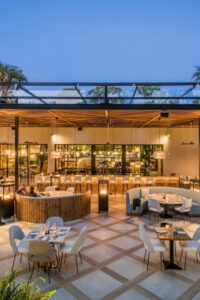
First Impressions Start with Design
When customers walk into a restaurant, the food isn’t the first thing they notice—it’s the design. Whether it’s the lighting, seating layout, or color palette, the space shapes how guests feel before they even check the menu.
At Aesthetic Arch Lab, we specialize in restaurant design that balances form and function. From smart interiors to standout exteriors, we help restaurant owners create spaces that support their brand and serve their bottom line.
If you’re planning a new location or updating an existing one, this guide breaks down what matters most in restaurant design—without the fluff.

The Role of Design in Restaurant Success
Design isn’t just about looks. It directly impacts how long guests stay, how much they spend, and whether they return.
A well-designed restaurant helps:
- Set the mood and atmosphere
- Improve staff movement and service flow
- Reinforce the brand’s identity
- Create social media-worthy moments
- Maximize available space
Every decision—from furniture to finishes—should support both customer experience and operational efficiency.
Restaurant Design Interior: What Matters Most
The restaurant design interior is where guests spend the most time, so it needs to be comfortable, functional, and brand aligned.
Key areas to focus on:
- Seating Layout
- Ensure a smooth flow for both customers and staff
- Avoid overcrowding while maximizing capacity
- Offer a mix of seating options (booths, tables, bar stools)
- Lighting
- Use adjustable lighting to set the mood (warm and soft for dinner, brighter for breakfast or lunch)
- Highlight key areas like entrances, bars, or featured artwork
- Avoid harsh overheads that flatten the space
- Acoustics
- Use sound-absorbing materials to reduce echo
- Consider ceiling panels, rugs, or acoustic wall treatments
- Make sure music complements, not competes, with conversation
- Materials & Finishes
- Choose durable, easy-to-clean surfaces
- Align color schemes with your brand tone (e.g., earthy for organic cafes, bold for fast food)
- Keep textures consistent across walls, furniture, and fixtures
Unique Restaurant Design Ideas That Stand Out
In competitive markets, a unique restaurant design can be your edge. But “unique” doesn’t mean overdone—it means thoughtful, purposeful choices that tell your story.
Practical ways to add uniqueness:
- Custom murals or branded wall art
- Open kitchens or chef’s counters
- Statement light fixtures or sculptural elements
- Interactive design features (e.g., guest wall, photo booth area)
- Reclaimed or local materials that add character
The goal is to create a space that customers remember—and want to return to.
Restaurant Design Exterior: Curb Appeal Counts
The restaurant design exterior is your first marketing tool. It either draws people in or gets passed by.
Key elements to consider:
- Signage
- Keep it clean, visible, and brand-aligned
- Use lighting for visibility after dark
- Match typography and colors with your interior branding
- Entryway
- Make sure entrances are clearly marked and welcoming
- Add design elements like awnings, planters, or lighting
- Ensure accessibility for all guests
- Outdoor Seating (if applicable)
- Use furniture and umbrellas that match the indoor vibe
- Add privacy with planters, railing, or pergolas
- Include lighting for evening dining
Even in small spaces, a strong exterior can make a big difference in foot traffic and first impressions.
How to Plan Design in Restaurant Projects
A strong restaurant design doesn’t happen by chance. It’s the result of clear planning, collaboration, and execution.
Steps to follow:
- Define the Concept
- What’s your cuisine, target customer, and service style?
- How should the space feel—casual, elegant, fast-paced?
- Set a Budget
- Factor in not just construction and finishes, but also furniture, lighting, and permits
- Work with Professionals
- Partner with interior designers who understand restaurant flow, code compliance, and branding
- Coordinate with architects, contractors, and MEP engineers
- Test & Adjust
- Mock up layouts digitally before building
- Test seating arrangements or lighting at different times of day
Clear planning saves time, money, and headaches later.
Restaurant Design Tips by Dining Type
Not all restaurants have the same design needs. Here’s a quick breakdown by category:
Fast Casual
- Emphasize speed and clarity (clear signage, open pathways)
- Use durable, easy-clean materials
- Design for high turnover but comfort
Fine Dining
- Focus on ambiance, acoustics, and lighting
- Create intimate seating layouts
- Prioritize materials that signal quality and attention to detail
Cafes or Coffee Shops
- Encourage longer stays with cozy, varied seating
- Offer bar seating near windows
- Maximize wall space for art or shelving
Bars & Lounges
- Use dimmable lighting and bold textures
- Design zones for mingling, seating, and bar flow
- Include storage behind bars for quick service
Common Restaurant Design Mistakes to Avoid
Avoiding design pitfalls can save you from expensive revisions later.
Watch out for:
- Overcrowding the space
- Poor lighting control
- Ignoring HVAC (ventilation near kitchens and dining areas)
- Skipping ADA compliance
- Inconsistent branding across materials and finishes
Small details add up. Experienced designers help you catch these early.
Conclusion: Design with Purpose, Build for the Long Run
Restaurant design is more than aesthetics—it’s how your space functions, feels, and connects with customers. Whether you’re opening a new spot or remodeling an existing one, the right design choices make a clear difference in guest experience and business success.
At Aesthetic Arch Lab, we help restaurants across the U.S. design smarter interiors and exteriors that support daily operations and reflect the brand vision. From concept to layout to material selection, we bring practical expertise to every step.
Call to Action
Ready to design a restaurant that works as good as it looks?
Contact Aesthetic Arch Lab today for a consultation. We’ll help bring your concept to life with a tailored approach to space planning, materials, and brand alignment.